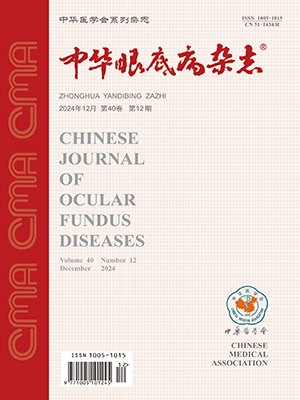Objective To compare the characteristics of the results of fundus fluorescein angiography (FFA) and indocyanine green angiography (ICGA) in patients with classic choroidal neovasculazation (CNV). Methods The data of FFA and ICGA of 34 patients (36 eyes) with classic CNV were analyzed retrospectively and the results of the two examinations were analyzed contrastively. Results The results of FFA revealed the clew or cartheel-tike configuration of classic CNV at the early phase in 3 out of 15 eyes (20%) with age-related macular degeneration (AMD); in 5 out of 7 eyes with pathological myopia(71.4%); and in 9 out of 14 eyes with central exudative chorioretinopathy (CEC),(64.3%),In 36 eyes with classic CNV, the images of ICGA indicated CNV distinctly in 20 (55.6%) and indistinctly in 15 (41.6%); CNV was not detected by ICGA in 1 eye (2.8%); feeding blood vessels in 6 eyes (16.7%) were detected by ICGA but none by FFA. Conclusions At the early phase of FFA, the configuration of classic CNV is clew-like in eyes with pathological myopia and CEC, and erose in eyes with AMD. The image of ICGA which indicated the outline of classic CNV is not as clear as the one of FFA, but it can reveal the feeding vessels which FFA can not. (Chin J Ocul Fundus Dis, 2006, 22: 217-209)
Citation: CHEN Yanli,WEN Feng,SUN ZUhua,et al.. Characteristics of fundus fluorescein and indocyanine green angiograms of classic choroidal neovascularization. Chinese Journal of Ocular Fundus Diseases, 2006, 22(4): 217-219. doi: Copy
Copyright © the editorial department of Chinese Journal of Ocular Fundus Diseases of West China Medical Publisher. All rights reserved




